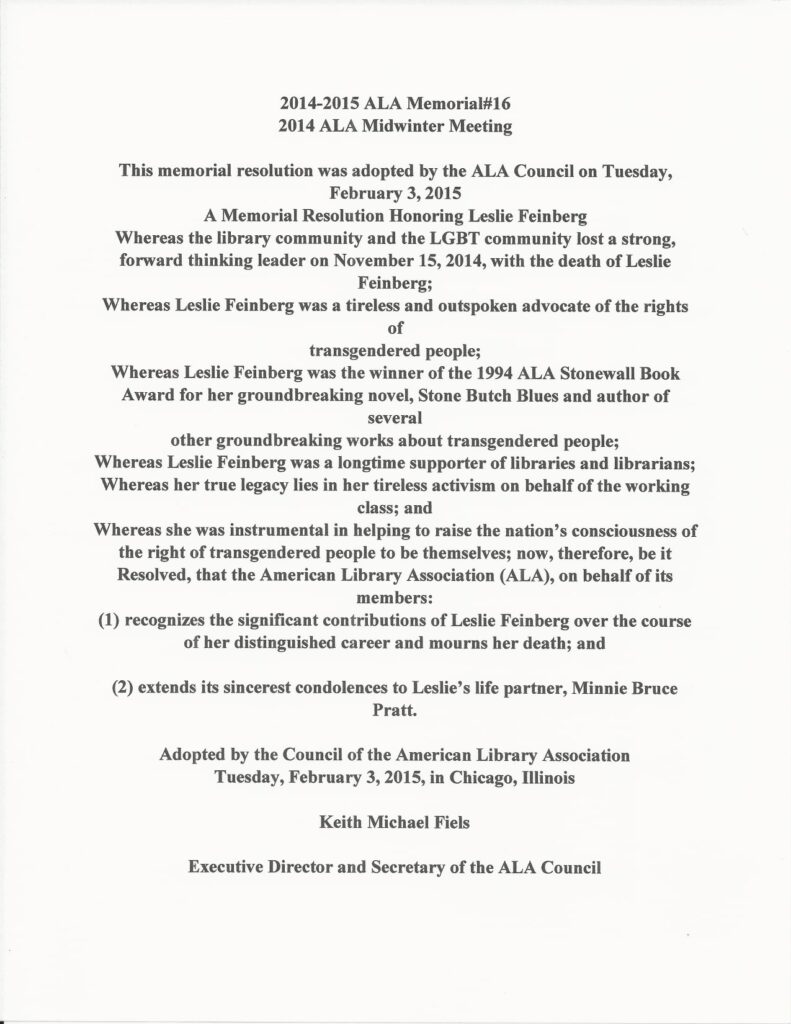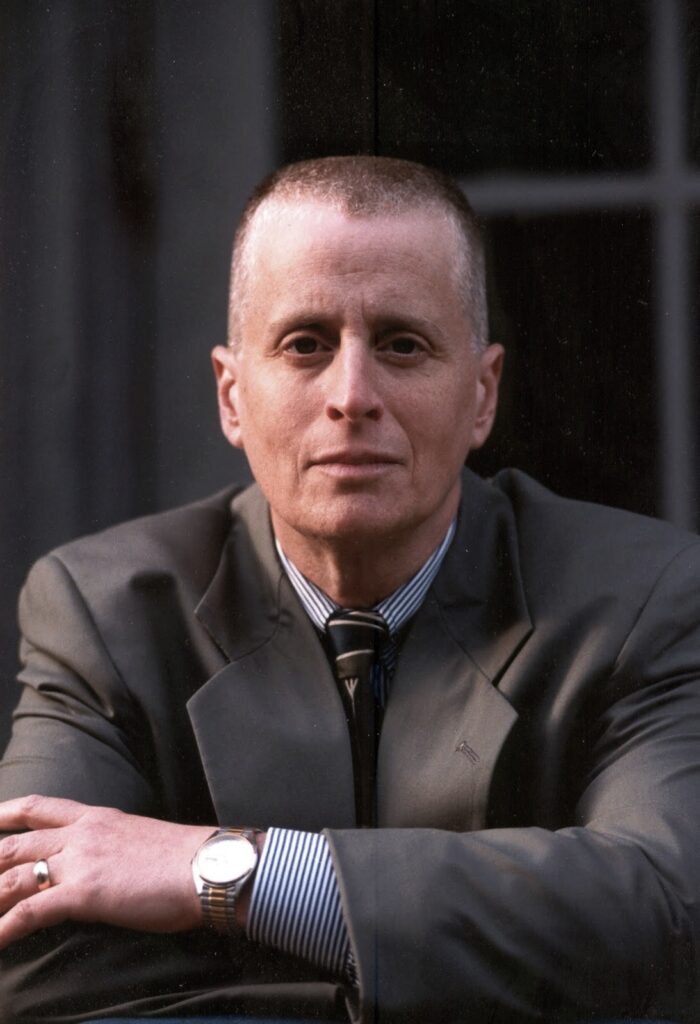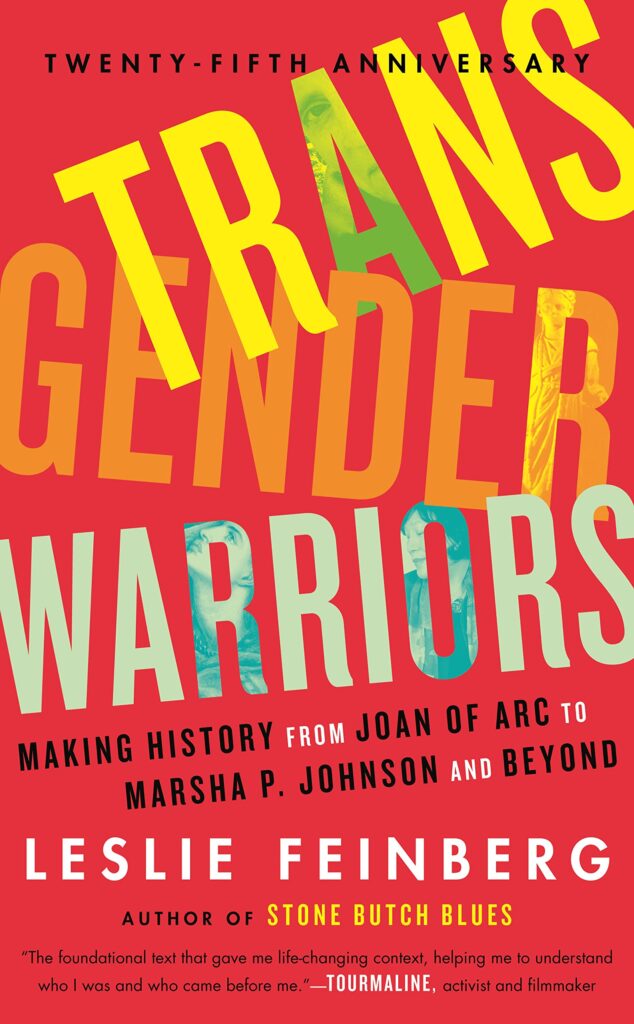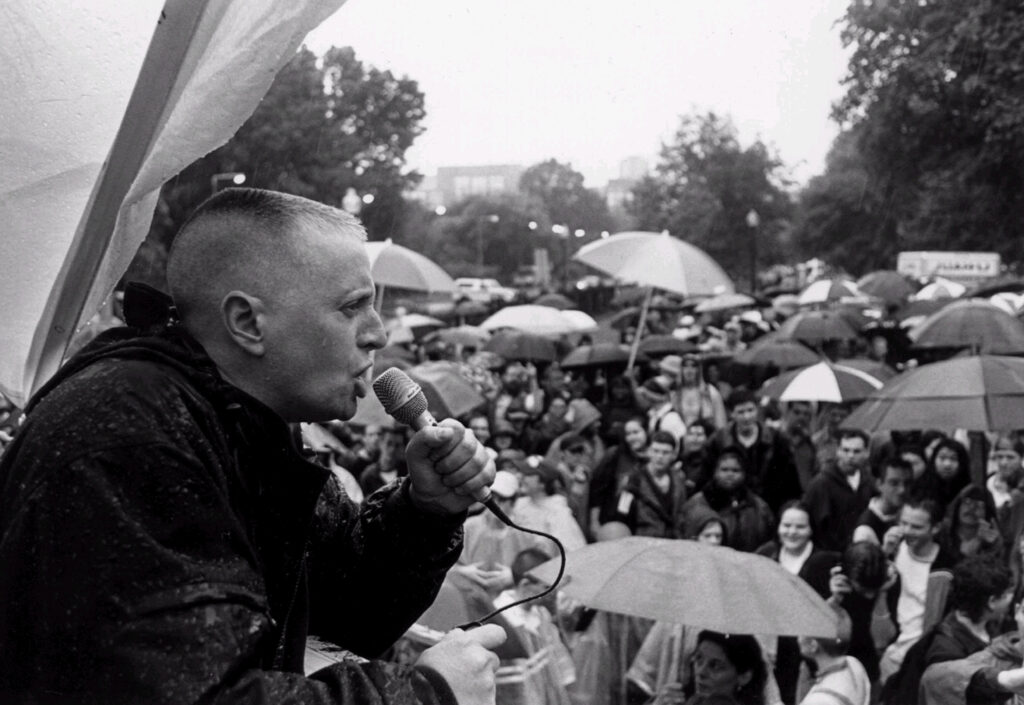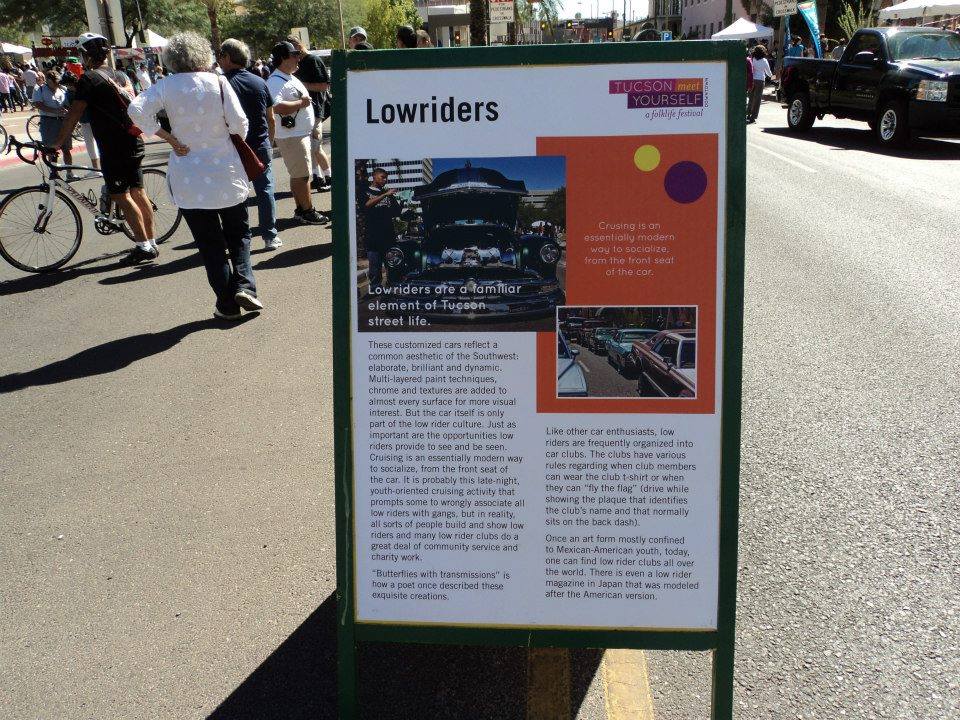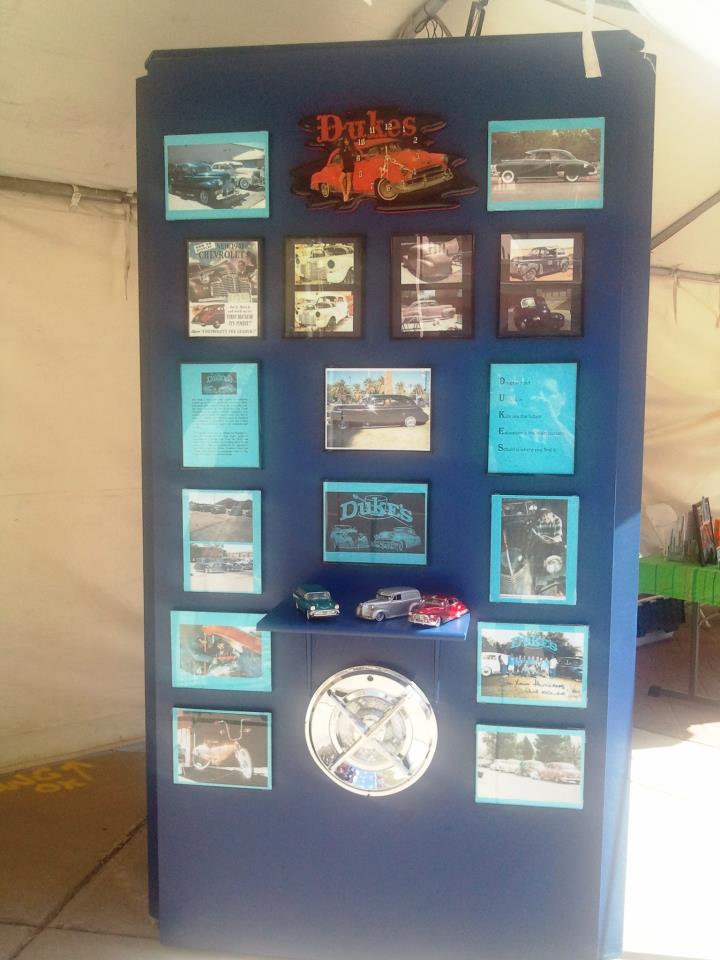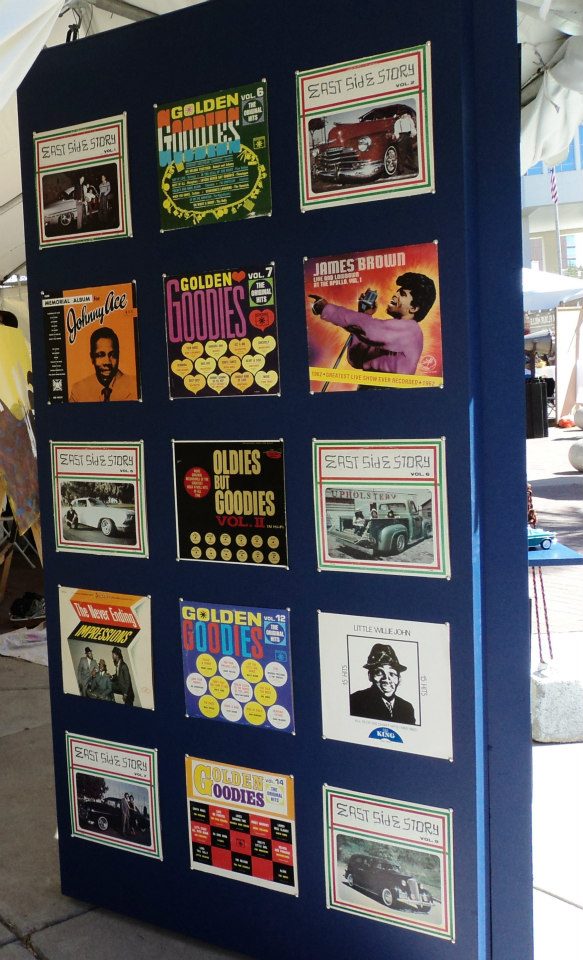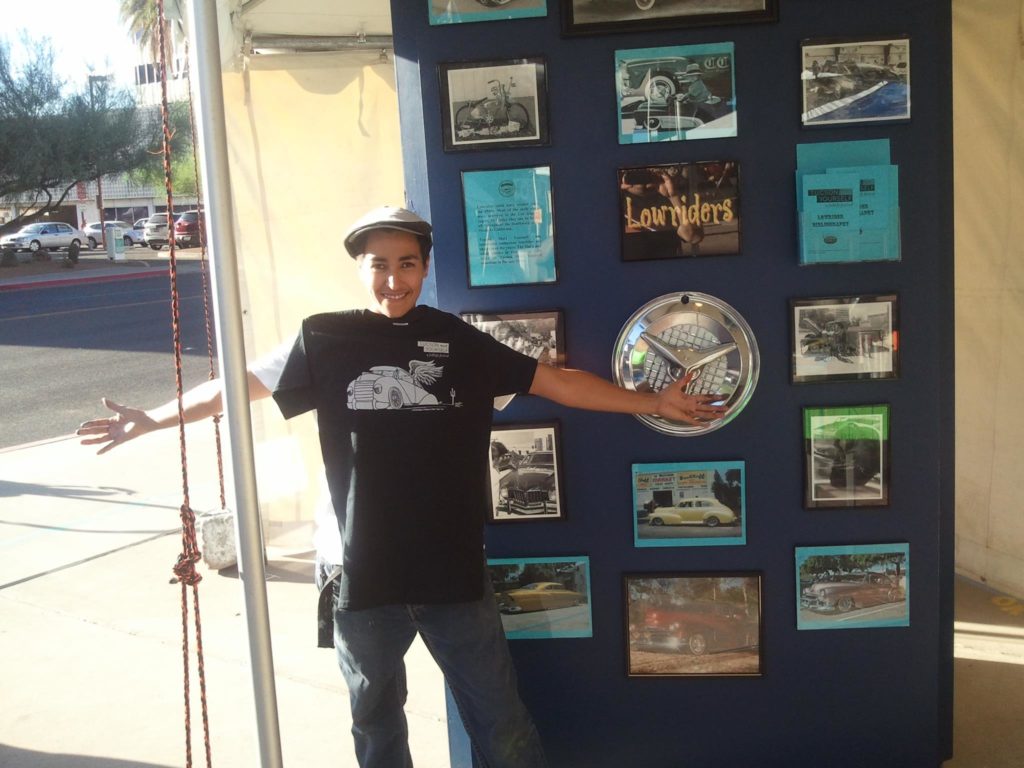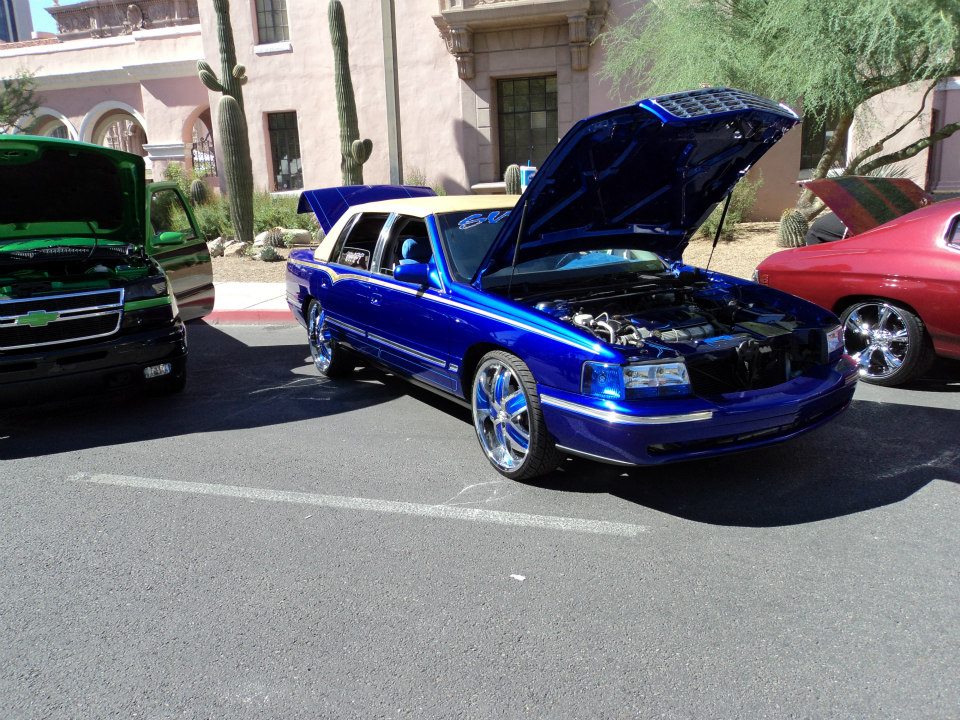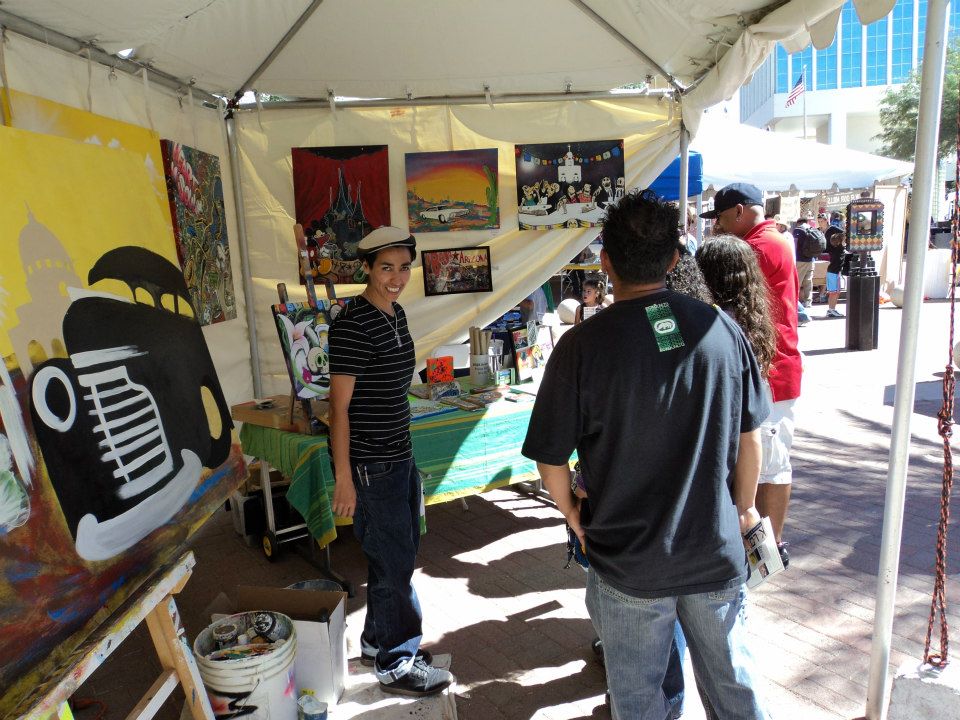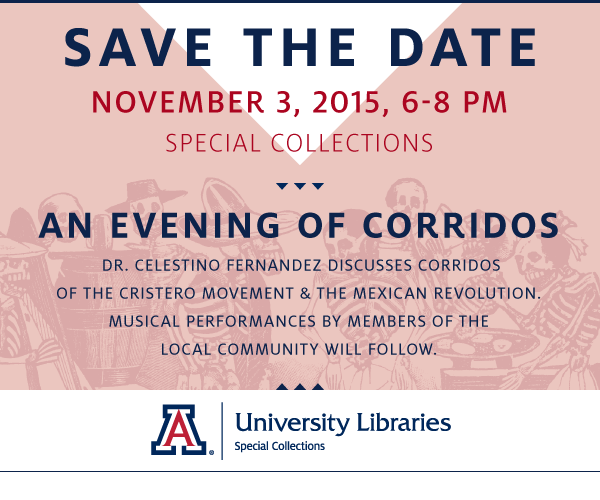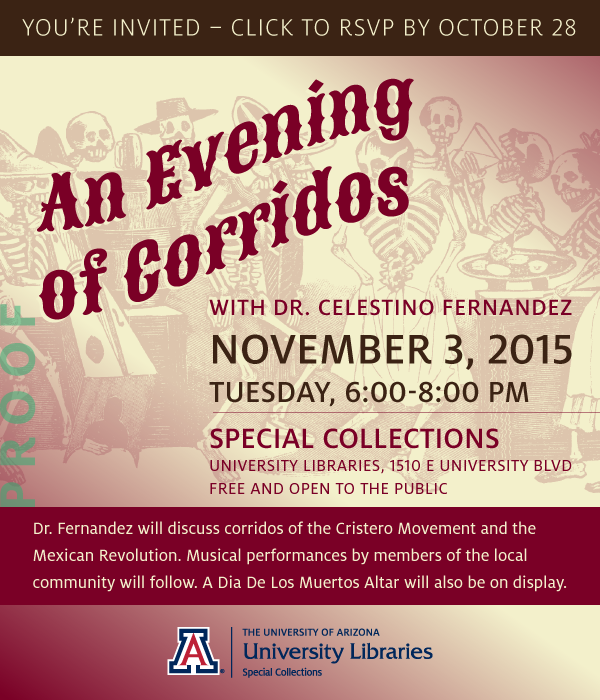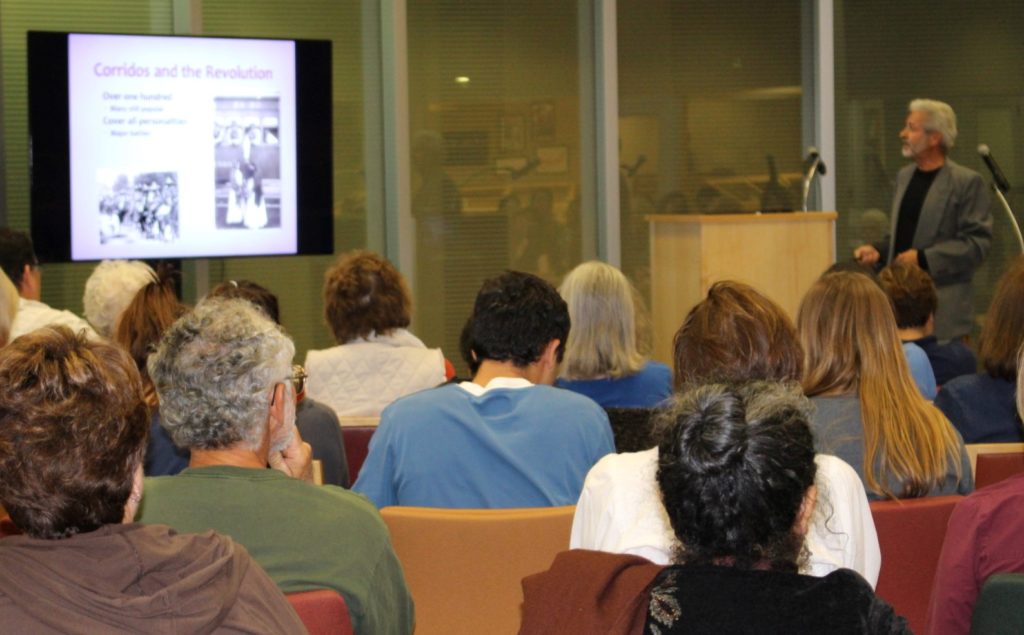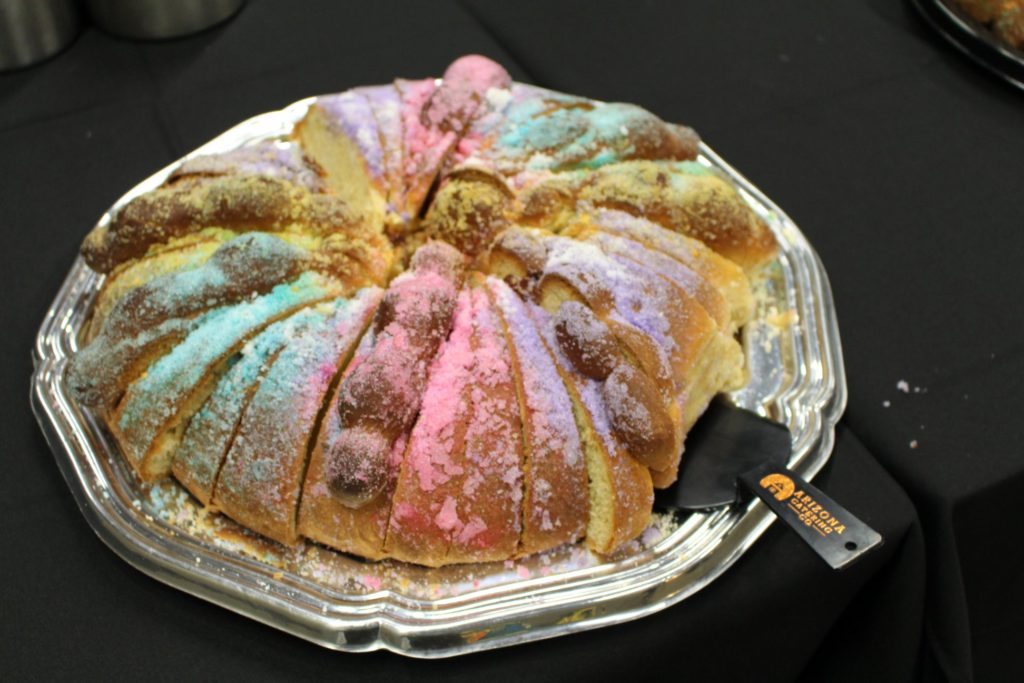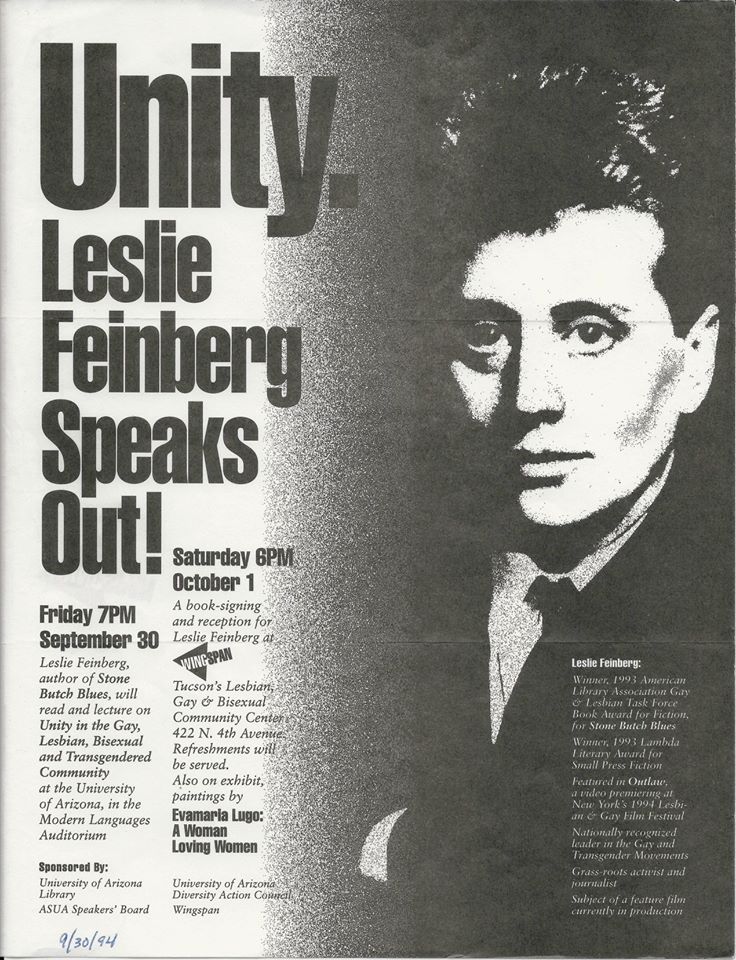
In the early 90’s I was a member of the American Library Association’s GLBT Book Award committee. One of the books published for the year under review was Leslie’s Feinberg’s groundbreaking novel, Stone Butch Blues. It brought to light the issues faced by people who were transgendered and it struck a strong chord with me. I lobbied hard for the book to win the award for fiction, and indeed it did, in 1993. At the time, my position at the UA Library was that of Assistant to the Dean for Staff Development, Recruitment and Diversity and part of my work was to engage in building partnerships with campus and community groups to help educate the campus and the community at large about issues faced by underrepresented or misunderstood groups, such as the GLBT community. I decided that it would be great to bring Leslie to Tucson, and worked with the members of Wingspan, the local gay community center to raise money to fund her visit, which took place during the Fall 1994 semester. We received support from the University’s Diversity Action Council as well as from the University Library and other groups.
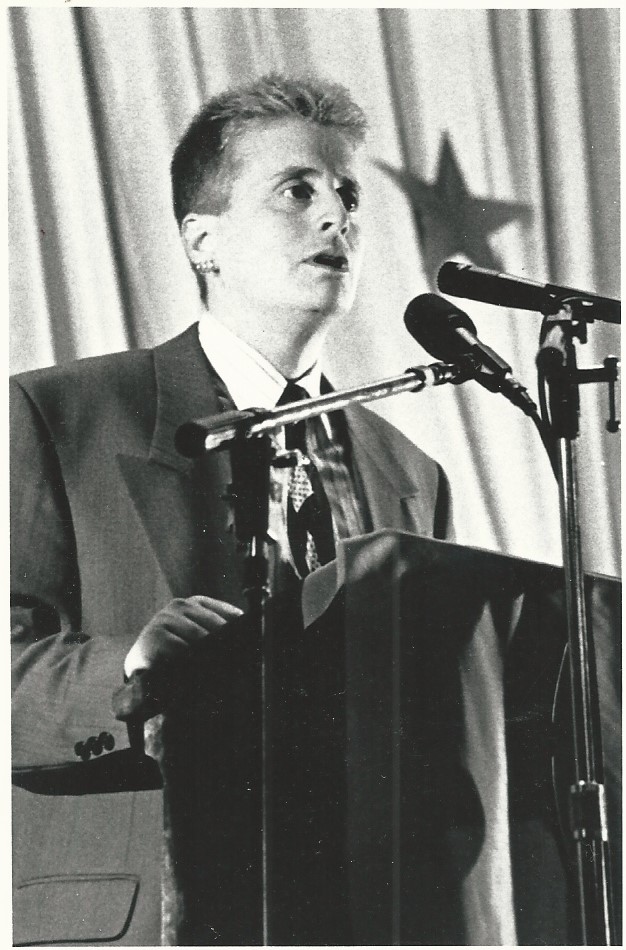
This is the news release I wrote for the occasion:
NEWS RELEASE….NEWS RELEASE…NEWS RELEASE…NEWS RELEASE
September 1994
- September 30, 7pm: Reading/lecture on Unity in the Gay, Lesbian, Bisexual and Transgendered Community. Modern Languages Auditorium, University of Arizona.
- October 1, 6pm: Book signing and reception at Wingspan, Tucson’s Lesbian and Gay Community Center, 422 N. 4th Ave.
- Refreshments will be served.
- For more information contact Bob Diaz at 621©2101.
Biographical sketch: Leslie Feinberg came of age as a young butch lesbian in the factories and gay bars of Buffalo NY in the 1960’s. Since that time, Feinberg has been a grassroots activist and a journalist.S/he is nationally known in the gay and transgender movements.
Leslie Feinberg was given the distinct honor of being the opening speaker at this summer’s Stonewall 25 rally in New York City, which drew millions of people from across the country and around the world. Feinberg’s novel, Stone Butch Blues, published on March 1, 1993 by Firebrand Books, has received a wildly popular response. The novel has received the prestigious American Library Association Award for Gay and Lesbian Literature and a LAMBDA Literary Award.

A video about Leslie Feinberg titled Outlaw (see excerpt below) premiered at the New York City Lesbian and Gay Film Festival this summer and is being distributed nationally and internationally.
Feinberg has toured the country for two years with the slide show on transgender issues that has played to packed audiences and standing ovations. Since October 1993, s/he has appeared on the Joan Rivers show and scores of other television and radio programs. Feinberg has been interviewed and and her work reviewed by virtually every lesbian/gay, transgender and feminist publication in the last two years.

Biographical Highlights:
- Winner of the 1993 American Library Association Gay and Lesbian
- Task Force Book Award for Fiction.
- Winner of the 1993 Lambda Literary Award for Small Press Fiction.
- Subject of the video production, OUTLAW, which premiered at the
- 1994 Lesbian and Gay Film Festival in New York City.
- Nationally known leader in the Gay and Transgendered movements.
- Grass roots activist and journalist.
- A feature length movie about Ms. Feinberg’s life is now in production in Hollywood.
bd 9/94
Here’s a copy of the article that appeared in the Tucson Weekly about Feinberg’s visit:
Feinberg’s visit was the first of several made to Tucson over the years. Within a few years of her visit, the Southern Arizona Gender Alliance was founded, which was a support and advocacy group whose focus was to support those who identify as transgendered. The group still exists and is stronger than ever.

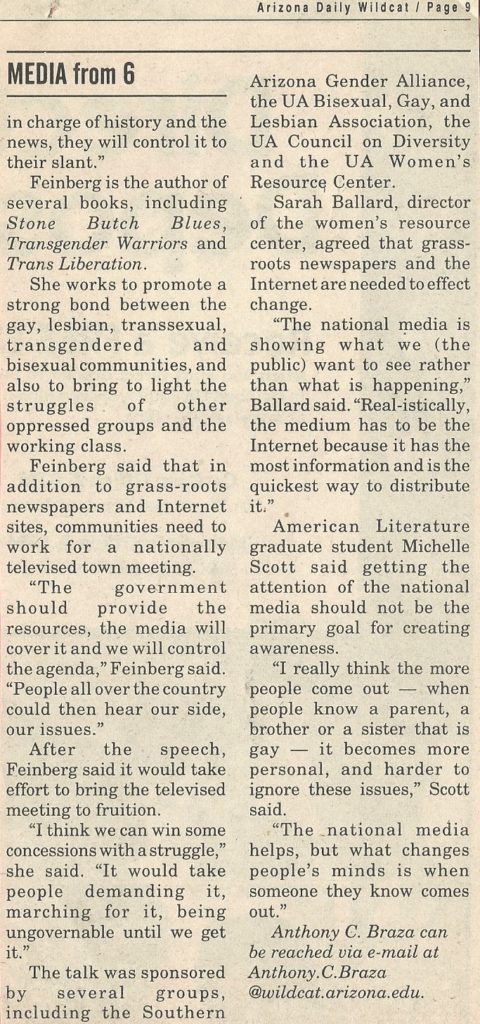
Feinberg returned to Tucson in 2004 for the following event.
In 2007, Leslie was the keynote speaker at the Annual Wingspan dinner in Tucson. Read about it here.
Read Feinberg’s obituary in the Advocate here.
Years later, after Feinberg died in 2014, when I was a member of the American Library Association Council, I authored a resolution for the Association that was passed in Leslie’s memory. I’ll never forget how encouraging and supportive Leslie was to me and my partner, with whom she became fast friends. She encouraged me to do more community organizing and complimented me on the work I did when I brought her to town all those many years ago. Introducing her to the Tucson community was one of the best moments of my career.
She was a true revolutionary.
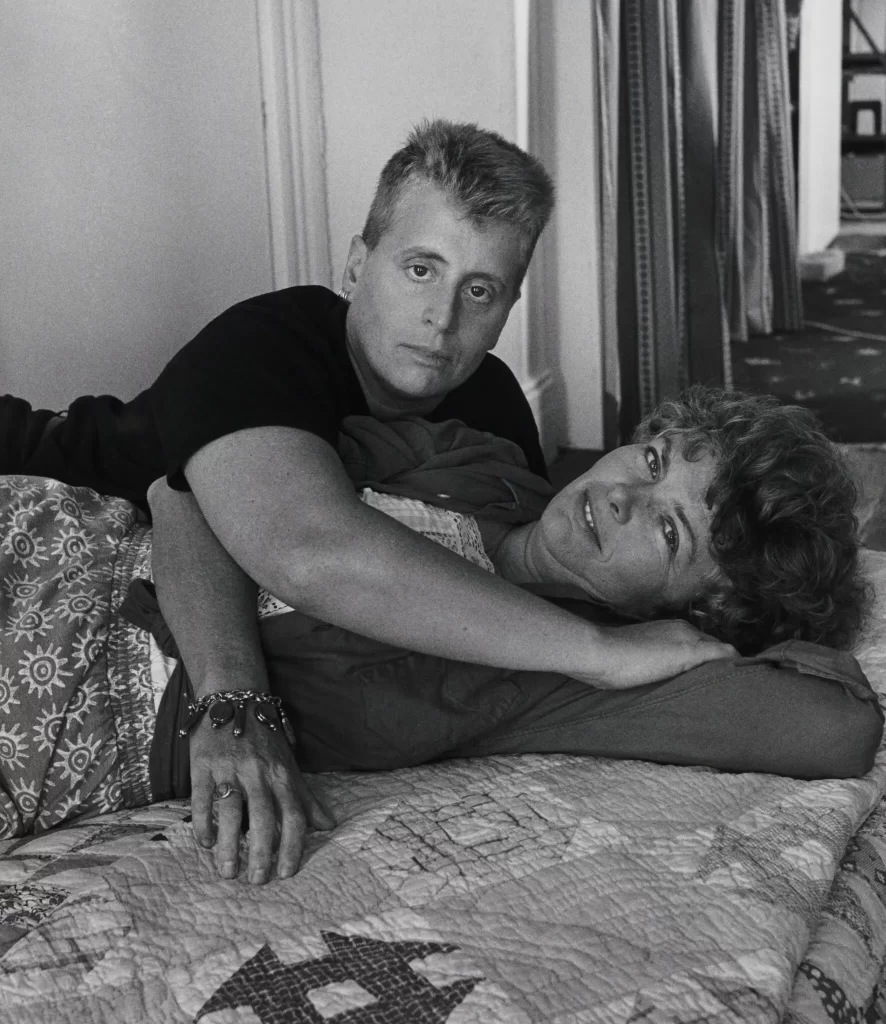
Further reading:
Leslie Feinberg Beheld a World without Gender, by Martha E. Stone. The Gay and Lesbian Review, March-April, 2015.
Leslie Feinberg’s Curriculum Vitae.




